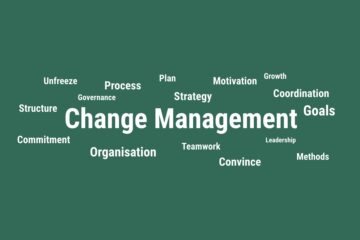Construction cost estimating can be defined as the prediction of the total construction cost of a project in the construction industry. Estimation is a way used to decide the feasibility and cost of the whole project in detail. The earlier use of estimator depended on take off from paper plans and documents to quantify and price. However, looking at the current years, technology has advanced and enhanced this process. Incorporating innovations, there exist several methods today ranging from Building Information Modeling (BIM) to the use of artificial intelligence insight. In this article, a few of the biggest influencing technological trends that have the potential to revolutionize construction estimation in the future will be discussed.
Building Information Modeling
Perhaps the most prominent advancement seen in recent years is the use of Building Information Modeling (BIM). BIM is defined as developing an accurate and comprehensive 3D model of a building that is created digitally and contains geometric details of parts of the building. This way, estimators can obtain the right quantities and additional information which is obtained directly without having to undertake manual take-offs which are often inaccurate. There are other features like clash detection and the like that help eliminate errors and amendments down the line.
Construction estimating services Canada estimators, therefore, get a richer view and have less time to do standard quantity take-offs and analyses from the BIM model. One way that it can help is that it can make it easier to work with other people who are involved with the project. It also allows for the ability to plan cost effectively during the conceptual design stage compared to having to wait until the detailed drawing stage. It also enables teams to weigh design options we make decisions based on the cost reduction. In other words, BIM has placed construction estimation in a new paradigm where a single source of information is used. However, some concerns need to be aware of: First, the learning curve is steep; Second, the cost may be a drawback in the first two years, although most teams get a positive ROI.
Drone and Photogrammetry
Another rather active and developing technology that can improve the estimating process is the drone and photogrammetry solutions. This modern technology is highly beneficial for construction teams because, with the help of drones with cameras, they can capture very precise aerial imagery and data of the construction site or structure. Using specific photogrammetry software, these images are combined into precise 3D models, point clouds,s or an orthophoto map of the land surface and its geometry.
These realistic 3D models are used by estimators to take off quantities and help build the cost estimate. This makes it easier to accurately estimate even in the most remote or hard-reach areas that would otherwise require physical surveys. This way, time and costs are reduced for teams, yet safety is enhanced since climbers are not forced to climb precarious structures. In the future, as the technology progresses further in the use of drones and photogrammetry, the integration of this technology will increase the practice of construction estimating.
AI Big Thing That Will Redefine the Construction Estimation Industry
AI is the next big thing that will redefine the construction estimation industry in the next few years. It is now evident that AI and machine learning systems can play a significant role in automating various quantification and pricing tasks that may otherwise require a lot of time and manual effort. Any construction project creates huge amounts of data over the entire life cycle of the project and contains numerous drawing files, BIM models, enterprise applications, and price indicators.
Future sophisticated tools can constantly consume and analyze this big data. Machine learning attempts to learn patterns and develop models to enhance accuracy with regards to costs, and quantities. AI has the advantage of offering quantitative risk evaluations that are capable of factoring in variation elements that may prove hard for a human risk estimator to factor fully. Moreover, they get wiser and wiser with time and adapt to the given tasks by learning from previous projects.
There are now numerous technologies that can be implemented to help streamline the estimation process, and many technological startups in the field of artificial intelligence now provide interfaces for these processes. These include applications that may range from augmented reality Quantity TakeOff tools to automated estimating helpers.
Though the application of AI is still at its preliminary stage, the future benefits that can stem from the deployment of this technology can assist in tackling the growing scarcity of skilled workforce around the world as well as provide a quicker and more accurate estimation. In the future, as competitiveness based on the amount of data increases, commercial estimating services companies will use artificial intelligence and machine learning to squeeze every penny, thanks to better estimates.
The Cloud
This is where the technological construction powers all these estimation companies in NYC technologies with the help of the cloud, and the cloud brings its benefits. As a form of outsourcing IT services, cloud computing delivers massive, efficient, and convenient IT resources, platforms, applications, as well as solutions over the Internet. By presenting solutions in the cloud instead of conventional servers located in the construction teams’ working areas, construction teams benefit from freedom and less dependence on location. Software updates itself and scales computationally in parallel, as and when required, to the cloud.
This way, estimators can deal with quantification or confirm pricing from anywhere they are as long as they have easy mobile access. Most of the new inventions in construction acts rely on the use of cloud delivery to enhance outreach and the rate of implementation. The cloud also has the advantage of supporting stronger interaction between members of the supply chain. In conclusion, the cloud platforms are ensuring agility and availability of innovations in construction estimation to anyone involved in the process.
Virtual and Augmented Reality
Finally, two more tech disruptions in construction estimating are virtual reality (VR) and augmented reality (AR). VR grows an entirely created environment that mimics reality while AR places virtual objects on real scenes. Thus, estimators can effectively employ these technologies in numerous contexts as a tool for increasing productivity.
In design reviews, VR and AR help performance visualizations or walkthroughs that can highlight problem areas and improvements to estimations. Site visits can be reduced by evaluating scouting environments from a distance. These are some of the ways by which realistic VR training and education help in developing estimate accuracy. AR devices assist in qualifying hours and materials against the tangible building components observable in the field. With further decline in prices, the application of VR & AR in estimation is going to open up a wide array of possibilities.
Conclusion
The use of Cost Estimating has been eased by advancements in technology whereby construction cost estimating can now be done at much higher speed, quality, and insight than before. Resume the forward movement by making correct decisions on the utilization of the approaches in a desired manner that fits your team’s requirements and organizational development level. These estimation innovations should be integrated into other collaborative processes and skilled teams better to enhance project efficiency and performance.
With construction costing one of the largest expenses within industries today and a project’s success often dependent on its profitability, cost estimation remains central to industries. Let technology continue to advance but remain mindful of methodology and people as they are the key focus. When firms unfettered innovation, they will be able to accurately predict and manage budgets, which will translate to growth and value creation in construction portfolios.



